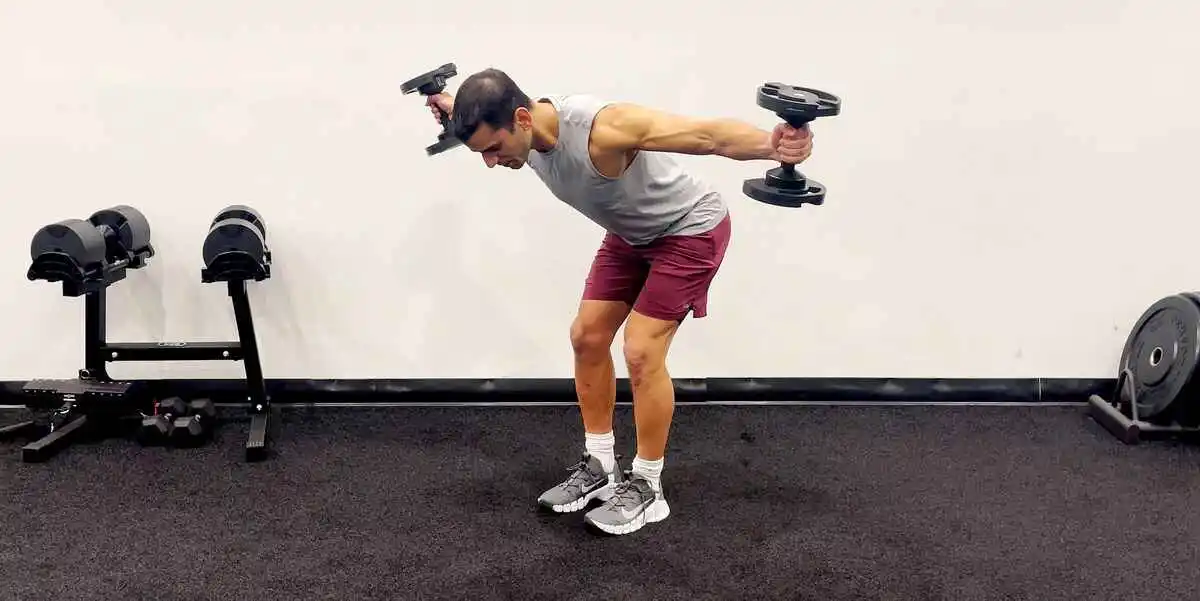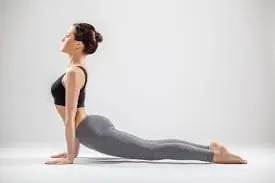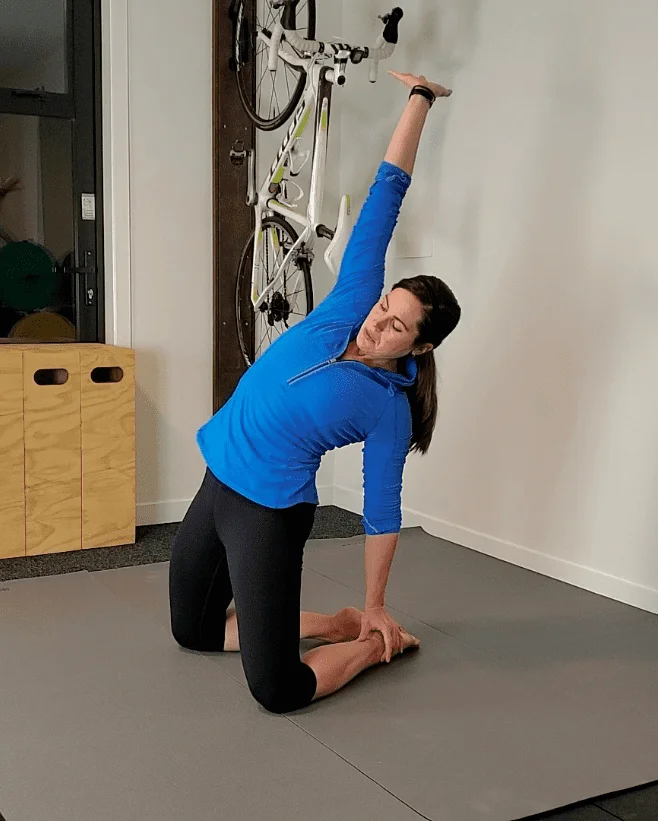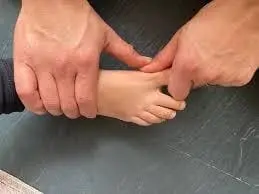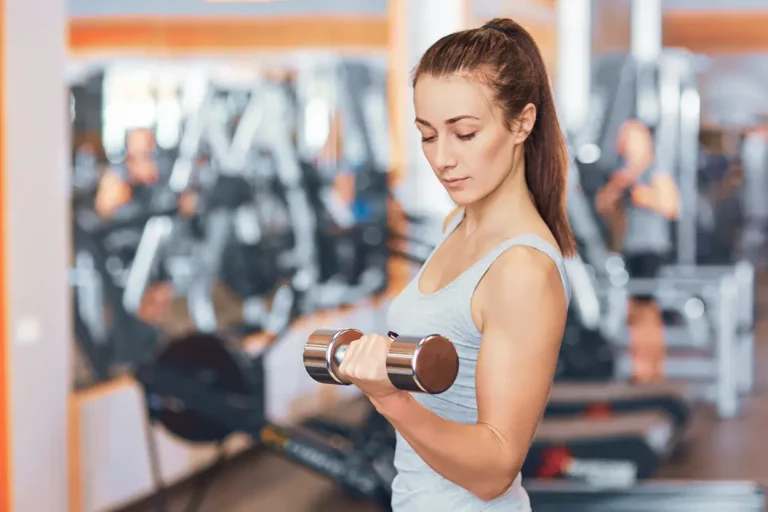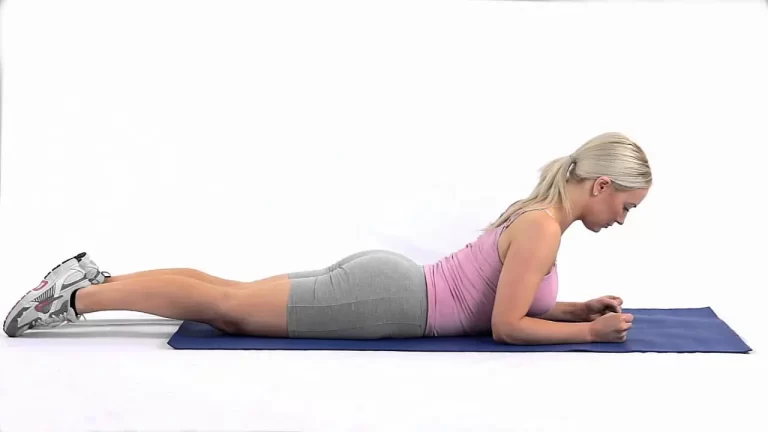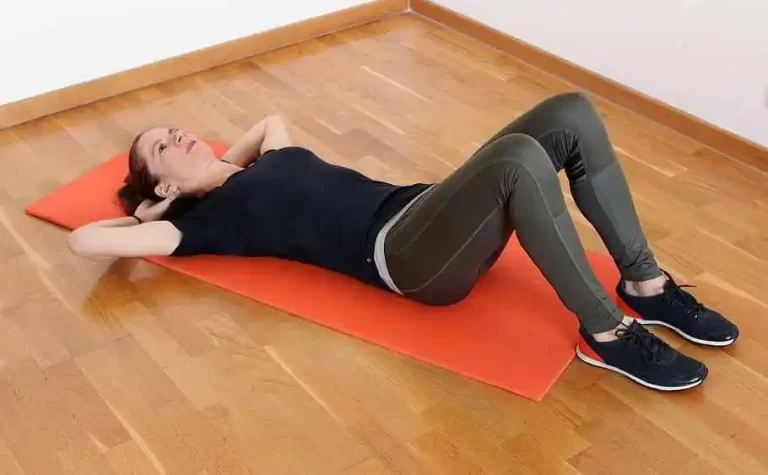21 Best Exercises for Posterior Deltoid
Exercise for the Posterior Deltoid is crucial for shoulder stability, strength, and flexibility of the shoulder region. The posterior deltoid is an important muscle group located on the back of the shoulder. Strengthening this area can improve shoulder stability and enhance overall upper-body strength.
In addition to preventing injuries, strong shoulders additionally come with a variety of practical advantages. Building posterior deltoid strength may not be simple, although every muscle works in concert to support the shoulders during daily tasks like lifting large luggage.
This article provides effective exercises for posterior deltoids to strengthen and improve your posture and overall shoulder health.
Introduction:
The deltoid muscles cover the top part of your shoulder. They support lifting your arm from the front, side, and back. All types of pitchers, swimmers, and anyone who performs repetitive overhead movements of the arms can have deltoid muscle pain.
Apart from providing stability to the shoulder joints, the posterior deltoids facilitate many pulling actions. You may want to include a deltoid exercise in your routine to give your shoulders a complete workout. Strong shoulders provide several practical benefits as well. Workouts that target the shoulders might improve endurance.
While the entire muscle group supports the shoulders when performing daily duties like lifting heavy bags, building posterior deltoid strength may not be simple. The posterior deltoid exercises on this list can help with strengthening.
To strengthen the shoulder and increase its ability to do everyday tasks with greater strength, engaging in exercises that develop the deltoid muscle is important. They also lower the risk of injury and provide several health benefits. Your posterior deltoid muscle supports your shoulders when you extend your hands out to the sides.
How is treatment for deltoid muscle injuries managed?
Most problems of the deltoid muscle can be treated non-operatively and include;
- Physical Therapy
- Shoulder exercises to improve shoulder strength and mobility.
- Injections of steroids are used to alleviate pain and inflammation.
- To relax stiff muscles, apply warm compresses.
- Use ice packs or cold compresses to minimize edema.
- Painkillers or muscle relaxants, maybe.
Advice on How to Strengthen Your Posterior Deltoid:
- Focus your attention on the muscles
You should be aware that your awareness and intention affect which muscles are more active in most cases, but especially in the case of the shoulder and upper back muscles. For instance, during a row or back fly, you can choose to concentrate more on the muscles in the back of the shoulder, such as the posterior delt, or on the muscles that run between the shoulder blade and the spine. Focus on engaging the muscle that you wish to work on.”
- Touch them with your hand
While it’s functioning, if at all possible, attempt to touch the rear delt with the opposing arm.”The muscles in the rear of the shoulder should feel stretched. That’s when you’ll realize you’re going in the right direction.
- Choose low weights
Remember that using your big muscles, such as the trapezoids and rhomboids, will become more necessary the heavier you work.”When utilizing bands or lighter weights, you will probably concentrate more on the posterior delt.
The benefits of strengthening exercises for the posterior deltoid:
The following are some benefits associated with regular exercise;
- Deltoid exercises help to strengthen the upper back, shoulders, and arms.
- Shoulder strengthening exercises can help improve muscular function, posture, and healthy motion patterns.
- Regularly performing these exercises can help the patient move with flexibility and strength while also treating and preventing shoulder disorders.
- Those who usually sit or bend forward would benefit from this, as it improves posture.
- Increased muscular power
- Relaxing the muscles
- Reducing any tightness or pain.
- Exercise could help you to regain mobility.
- Improving coordination.
Exercises for Posterior Deltoid:
The best exercises to develop your posterior deltoid strength are listed below.
Band Pull-Apart
- Take an upright standing position, feet shoulder-width apart, and set your palms face down on a long resistance band in front of you.
- Hold your hands shoulder-width apart and at shoulder height.
- Push your shoulders down, lower your head down, and engage your core.
- Maintain this state of mind.
- Breathe in and out as you pull your band apart, bending your elbows slightly or keeping your arm straight.
- Pull until your shoulder blades compress, causing your back delts to contract.
- Holding for a moment will allow you to feel the contraction at the back of your shoulders.
- Breathe in, fight the band’s resistance, and slowly return your hands to their starting position.
- Then relax.
- Repeat this exercise five to ten times.
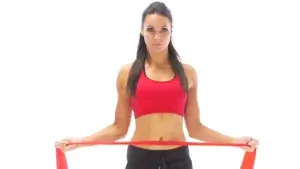
Quadruped Rear Delt Raise
- Starting on all fours on a mat, place your knees under your hips and your palms below your shoulders.
- Hold a dumbbell with your right hand.
- The impact should be felt in the back of your shoulder as you extend your right arm out to the side.
- Hold this position for a few seconds.
- Keep your back straight, engage your core, and try not to rotate to the side.
- Place the dumbbell back where it was before.
- Then relax.
- That is equal to one repetition.
- Repeat this exercise five to ten times.
- Change sides once you’ve completed all of your repetitions on one side.
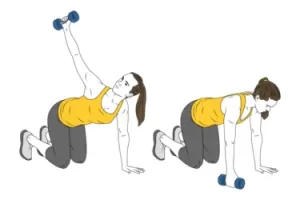
Inverted Rows
- Start by resting on your back below the racked bar.
- When gripping the bar, raise your arms and spread your hands slightly wider than your shoulders.
- Use an overhand hold, with your hands pointing out from your body.
- Take yourself go and slide over the bar.
- Your hands should be placed above your shoulders and your feet hip-width apart.
- Lift until the bar touches your chest.
- Your body should stay in alignment from your toes to the top of your head.
- Hold for a few seconds and then progressively lower yourself.
- Then return to your neutral position.
- Then relax.
- Repeat this exercise five to ten times.
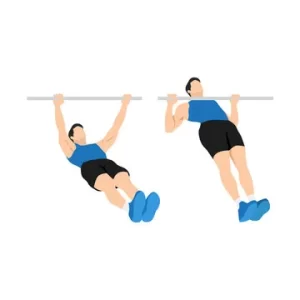
Bending-over single-arm row
- Put your hand as well as your left knee on the bench.
- Keep your left elbow straight.
- Slightly stretch your right leg behind you while keeping your foot securely planted on the floor for support.
- Maintain an aligned spine and a straight back.
- As you stretch your arm toward the floor, raise your right hand to a medium-to-heavy dumbbell grip.
- Bending and pulling your right elbow back and up until your upper arm is about in line with your lower chest.
- Squeeze your shoulder blades together tightly at the top of the exercise.
- Lower the weight in a controlled manner.
- Then return to your neutral position.
- Then relax.
- Repeat this exercise five to ten times.
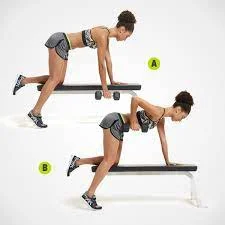
Dumbbell Y-T-I Raise
- Grasp a dumbbell in each hand and lie down on a bench or stability ball.
- Raise your arms straight down toward the ground, your palms towards each other.
- Raise your arms to a 45-degree angle and keep your head neutral to form a “Y” shape.
- Just quiet for a little while.
- Then, put the weights back where they were before.
- Lift the weights once again and position them in a ‘T’ form at your sides, pointing down with your hands.
- Take a short break at the top of the workout before dropping the weights.
- To form an “I” shape with your hands facing each other, lift the weights by extending them straight behind you.
- Then return to your neutral position.
- Then relax.
- Repeat this exercise five to ten times.
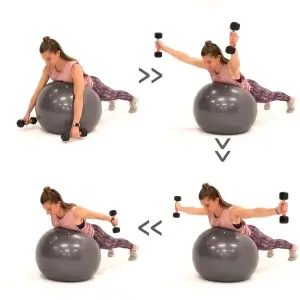
Bent-over lateral raise
- With your palms facing opposite directions, grab a pair of dumbbells.
- Set your feet shoulder-width apart, bend your knees slightly, and keep your back neutral while you bend over forward at the hips.
- Your elbows should be relaxed and the weights should be together below your chest.
- Lift your arms up and down, parallel to the ground, like wings.
- Contract your shoulder blades at the top of the workout.
- Hold this position for a few seconds.
- Put the weights back in the starting positions slowly and gently.
- Then return to your neutral position.
- Then relax.
- Repeat this exercise five to ten times.
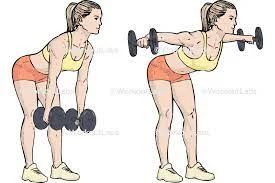
Assisted pullup
- On the machine’s side, modify the weight adjustment.
- Decide on the right amount and select.
- Get onto the knee pad and push it down once it is low enough for you to rest both knees on.
- The spaces between your knees should be hip-width out.
- Take hold of the outer handles above you, palms separate from the center.
- Stretch your arms out and bring yourself down to the starting position.
- Pull your body upward and raise your chin to meet or above the handles.
- Hold this position for a few seconds.
- Afterward, gently lower.
- You should always keep your shoulder blades engaged.
- Strongly squeeze them before you release them.
- Then return to your neutral position.
- Then relax.
- Repeat this exercise five to ten times.
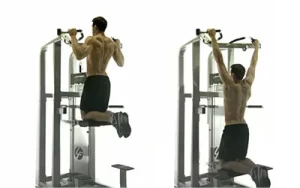
Side-lying external rotation
- Hold a small dumbbell in your hands as you lie on your side.
- With your elbow, 90 degrees bent, rest your upper arm on the side of your body.
- If your shoulders are wide, place a towel roll between your upper arm and your upper body.
- Keep your upper arm attached to the body and, as far as possible, move your arm around the center of your body.
- Hold this position for a few seconds.
- Then return to your neutral position.
- Then relax.
- Repeat this exercise five to ten times.
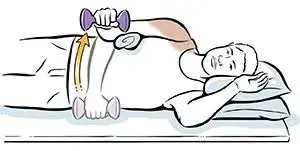
Bent-Over-Row Dumbbell
- Standing with your feet hip-width apart, hold dumbbells in your hands.
- Your body should be parallel to the floor while you push your hips back while moving forward in a bending motion.
- Maintain a straight-arm posture and make sure your hands are facing each other.
- Confirm that you have a straight back.
- Flex your shoulder blades while bringing the weights to your side.
- Hold this position for a few seconds.
- Then return to your neutral position.
- Then relax.
- Repeat this exercise five to ten times.
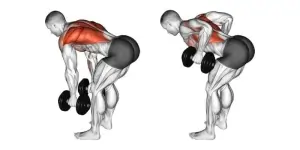
Cable Face Pull
- Attach the rope attachment to a cable machine at eye level.
- Using your hands facing each other, grasp the ends in an overhand hold.
- Step forward facing the cable machine, keeping your arms straight, until you feel enough resistance and effort.
- Keep your distance between your feet at the width of your shoulders.
- Get your hips pushed in, extend your knees just a little, and squeeze your glutes.
- Take a breath and let go of the rope as you reach your face.
- With your elbows elevated, pause now.
- Release the stress that the cable is creating gradually while keeping your arms in the starting position.
- Then return to your neutral position.
- Then relax.
- Repeat this exercise five to ten times.
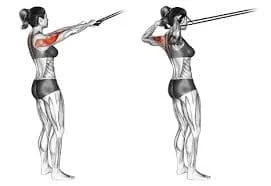
Dumbbell Arnold presses
- Holding a dumbbell set in your hands, place your legs shoulder-width apart.
- Push the dumbbells up to shoulder height while keeping your hands palm-sideways.
- Maintain a straight back while bending your knees gradually.
- Turn your wrists 180 degrees so that your palms are facing away from your body and slowly press the dumbbells above your head.
- Lift the weights until your arms reach nearly the ceiling.
- Turn your wrists so that your palms are once again facing you as you gradually lower the dumbbells back to the position from which you began.
- Then return to your neutral position.
- Then relax.
- Repeat this exercise five to ten times.
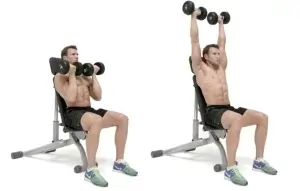
Seated Bent-Over Row
- Sit upright and maintain a straight back while placing your feet flat on the floor and hip-width apart.
- With your hands facing each other, take a dumbbell in both of your hands.
- Bend forward from the hips to bring your back flat and parallel to the ground, or as close to parallel as possible.
- As you stretch your arms toward the ground, keep the dumbbells close to your ankles so they are not in contact with them.
- As you pull the dumbbells toward the sides of your abdomen, squeeze your shoulder blades together.
- Keep your neck in line with your spine and prevent from arching your back.
- Hold this posture for a short time.
- Move the dumbbells gradually to where they were previously.
- Then relax.
- Repeat this exercise five to ten times.
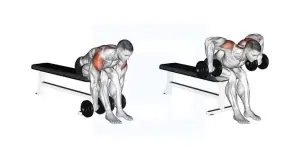
Wide-Grip Pull-Up
- Take hold of your bar with hands wider than shoulder width and an overhand grip.
- Raise your feet above the ground.
- To build stronger lats and backs, pull your shoulders backward.
- Feel the rotation of your shoulders outward pushed by your back delts.
- Contract your core and glutes while bringing your head back.
- To lift yourself, take deep breaths and exhale them.
- As you raise your body to the bar, think about putting your elbows down toward the floor and a little behind you.
- Elevate your chin off the surface.
- At the top, press your shoulder blades towards the ground together.
- Maintaining a straight posture with your arms, slowly lower yourself.
- Then return to your neutral position.
- Then relax.
- Repeat this exercise five to ten times.
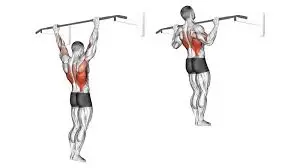
Wide-Grip Lat Pulldown
- A broad bar should be attached to a lat pulldown machine.
- Straighten your posture, plant your feet firmly on the ground, and easily reach over the bar by adjusting your seat.
- Reach for the bar with hands wider than shoulder width and an extended grasping.
- Pull your head back, contract your abdominal muscles, and droop your shoulders.
- Hold the pressure and straighten your spine as you softly lean back.
- Inhaling deeply, release the bar as you bring it to your chest.
- You might want to think about keeping your elbows near your sides.
- Try to keep your wrists straight.
- Squeeze your shoulder blades together and down near the bottom to feel your back delts.
- Then return to your neutral position.
- Then relax.
- Repeat this exercise five to ten times.
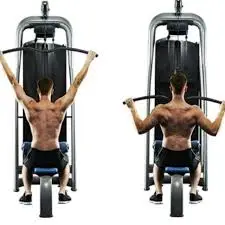
Renegade Row
- Set the starting point by lowering yourself into a high plank position, using a dumbbell in each hand and your feet wider than your shoulders for greater stability.
- Exhale and raise your right arm, keeping your elbow near your chest and in a full range of motion, while maintaining an upright hip and a strong core.
- Take a breath and return the weight to the floor.
- Then return to your neutral position.
- Then relax.
- Repeat this exercise five to ten times.
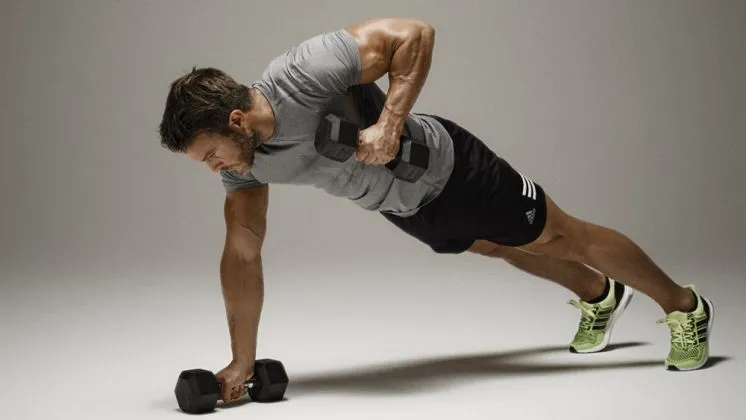
Upright Row
- Place a pair of dumbbells in front of your body with your hands facing your thighs while standing with your feet shoulder-width apart.
- Exhale as you raise your elbows and extend them out to the sides while contracting your core.
- Ensure that your elbows are always above your wrists.
- When the weights get as high as they can go without becoming uncomfortable, stop and hold your elbows out to the sides until the weights are slightly below your chin.
- Breathe in, then gradually return the weights to their starting position.
- Then return to your neutral position.
- Then relax.
- Repeat this exercise five to ten times.
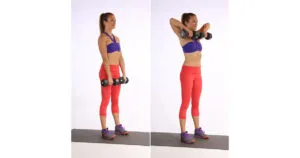
Bodyweight Cobra on Stability Ball
- Place a stability ball under your abdomen while lying facedown, and extend your legs straight back behind you.
- To support your weight on your toes, flex your feet.
- Stretch both arms out in front of you to create a “Y” shape while keeping your eyes fixed on the floor.
- Turn your palms to face the ground.
- Lean your head forward, lift your chest, and spread both arms out to the sides and behind you.
- Finish by putting both arms behind you and pointing your thumb upward.
- To go back to the beginning position, turn the movement around, then repeat.
- Then return to your neutral position.
- Then relax.
- Repeat this exercise five to ten times.
- To make the exercise more difficult, add weights.
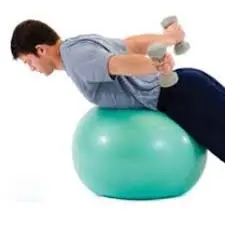
Incline dumbbell Y raises
- As you lie there, squeeze your stomach against the bench.
- To support your weight on your toes, extend your feet back.
- Hold your weights below your shoulders with your hands palms inside out.
- Lift the weights and position your arms in a “Y” shape.
- At maximum extension, pull your shoulder blades forward and tighten your core.
- Hold this position for a few seconds.
- Then return to your neutral position.
- Then relax.
- Repeat this exercise five to ten times.
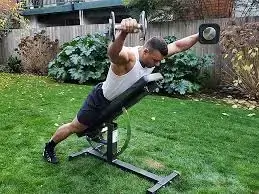
Barbell Snatch-Grip High Pull
- Place a weighted barbell so that it is raised to knee or thigh level on platforms or benches.
- Get a grip and hold on.
- This calls for wide-out, overhand grips close to the barbell’s ends on both sides.
- Come closely and tighten up as if you were going to use this grip to deadlift the weight.
- Extend your entire body in a single movement and pull your arms up so the bar reaches shoulder height.
- Then return to your neutral position.
- Then relax.
- Repeat this exercise five to ten times.
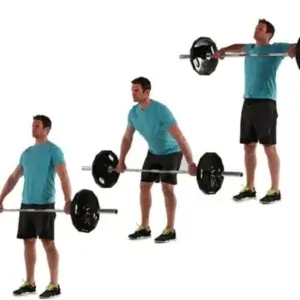
Ring Rockers
- Place two gymnastic rings at your waist level and hang under them, with your knees bent and your feet flat, as if you were ready to perform an upside-down row
- Pull your face through your hands and lower your hips under your body.
- When you are in the top position, you should look like you completed a pull-up by sitting straight.
- Then return to your neutral position.
- Then relax.
- Repeat this exercise five to ten times.
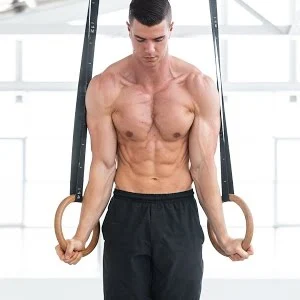
Cable Wide Grip Seated Row
- Use a wide grip and keep your arms out to your sides to target the posterior deltoids more.
- Hold a bar just a little bit broader than your shoulder width and take a beginning posture.
- Breathe in and gently pull the handle back toward your abdomen.
- Move forward and stretch your arms to slowly return to the starting position after exhaling.
- Then relax.
- Repeat this exercise five to ten times.
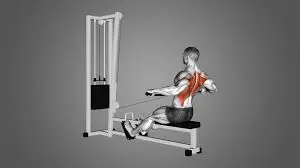
Take These Safety Measures When Doing Deltoid Strength Training:
When engaging in deltoid strength exercise sessions, you must take the following safety measures:
- Avoid participating in any sort of activity that hurts you.
- Take your time doing the workout. There’s no rush involved.
- You need to make use of the correct instruments.
- Wear relaxed clothing and comfortable shoes.
- You must warm up properly before exercising.
- As you exercise, maintain a straight back.
- If your exercise is causing you significant pain, stop.
Who Shouldn’t Do These Posterior Deltoid Exercises?
Exercises targeting the posterior deltoid should be avoided in the following conditions:
- If they have any kind of bodily pain or are experiencing shoulder injury.
- Feel sick or have a fever.
- If a person’s doctor has advised against performing certain workouts, then should not do them.
- An individual should refrain from performing posterior deltoid movements if they have a cracked arm.
- If a person has aching muscles, they should stay away from exercising.
- Exercises for the posterior deltoid might be skipped by someone who is sleep-deprived.
Summary
The posterior, or back, delts, are important shoulder stabilizers and are involved in a variety of pulling activities. It makes sense to strengthen them to keep your shoulder mobility maintained. As with any fitness program, see a doctor before beginning these exercises for the first time.
It’s also advantageous to work together with a professional trainer to make sure you’re using the equipment correctly and securely. If you want to grow your shoulders in a balanced way, these exercises will help neutralize the more powerful, front-loaded movements seen in other popular gym exercises.
FAQ:
What is the main use of the posterior deltoid?
Use the shoulder joint’s flexion, internal rotation, and horizontal adduction to reverse the motion to stretch this muscle. The three main actions of the posterior deltoid muscle are abduction, extension, and external rotation.
How are the fibers of the posterior deltoid stretched?
In either position standing or sitting begin the posterior deltoid stretch with a straight spine. Give yourself a break. While extending it across your body, gently grip one arm by the upper arm with the other arm or wrist.
Should I continue working out with deltoid discomfort?
It is okay to push through stiffness or difficulty during exercise, but not unbearable discomfort, pinching pain, or grabbing. The objective is to stretch until pain is reached, but not too much beyond. By pushing to the correct limit, you can gradually teach your body how to heal and extend, which will expand your range of motion.
Does improved posture result from strengthening the rear delts?
Having stronger shoulders can also help you stay stable when performing large lifts like the incline bench press or other unstable exercises where dumbbells and benches contact. Strong back delts can help correct the lean posture that most of us have at workplaces.
Which exercises target the deltoids?
Exercises on the list included push-ups, front raises with dumbbells, diagonal raises with cables, battling ropes, barbell upright rows, bent-arm lateral raises, and seated rear lateral raises.
What benefits does the deltoid provide?
Your deltoid muscles are one of the main muscular groups in your upper body. They connect to numerous muscles and bones in the upper back, neck, and shoulder region and are very mobile. They help you carry out routine activities like lifting, pressing, and pulling while preserving your upper body’s stability.
What role does the posterior deltoid play?
The main function of the rear delts is to prevent you from bending forward by pulling your shoulders back. Weak posterior delts will throw off your posture and put more strain on your shoulders and back to keep you standing. Additionally, an excessive load increases the risk of injury.
Are you able to work deltoid daily?
If the goal is large boulder shoulders, then shoulder programming should not be done daily. You should take a shoulder day only once or twice a week to prevent prospective shoulder injuries. This is so that your muscles have enough time to grow and repair themselves, which is necessary for developing large, muscular shoulders.
Is there a push or pull on the posterior deltoid?
Rear delt flyes are a push and pull exercise, but they are commonly viewed as a pull workout since you have to pull your arms and elbows back until they align with the sides of your body.
For what exercise do the posterior deltoids require to be activated the most?
45-degree incline row and the sitting rear lateral raise produced the highest activation of the posterior deltoid muscle for the rear of the shoulder.
How is the posterior delt position formed?
Due to bad posture, those who work at desk jobs or lead sedentary lifestyles often have weaker posterior chain muscles than anterior chain muscles. This includes the rear delts. Back pain and other long-term problems may result from this, which increases the posture even further.
What hurts in the deltoid?
Overuse injuries and strains are among the most common causes of deltoid pain. A deltoid injury is more common in people who utilize their shoulders and deltoid muscles frequently, particularly athletes. Heavy lifting or an injury, like a trip or fall, might cause a strain abruptly.
Deltoid weakness: what is it?
Shoulder weakness might make it difficult for you to move your arm. Muscular atrophy (loss of muscle tissue and thinning) may be evident in the shoulder’s deltoid muscle.
References:
- In 2022, on December 28, Prajapati, N. How to exercise to build your deltoid muscles, and what are the health advantages? Samarpan Physiotherapy Clinic. You may get deltoid muscle-strengthening exercises at https://samarpanphysioclinic.com. In-text citation: (Prajapati, 2022).
- June 19, 2023: Richter, D. The Top 10 Best Rear Delt Exercises for Strengthening and Muscle. https://www.strengthlog.com/rear-delt-exercises/ StrengthLog
- Six Exercises to Strengthen the Posterior Deltoid Muscle, Cpt, K. S. March 10, 2023. The website Healthline provides information on fitness routines, including workouts for the rear delt.
- Exercise for Posterior Deltoid 320: Technique and Restrictions.3. November 10, 2023. Protecting figures. Exercise for Posterior Deltatoid on https://www.godigit.com/health-insurance/exercise. Reference within the paragraph:( “Posterior Deltoid 320 Exercise: How to Perform the Exercise & Precautions,” 2023)
- August 7, 2023, J. Zucker. The 8 Top Rear Delt Workouts for Greater Strong, Athletic Shoulders.BarBend: https://barbend.com/best-exercises-for-the-rear-delt. Reference: (Zucker, 2023)
- 13 September 2023, A. Breitowich. These, in the opinion of a trainer, are the best rear delt workouts for defined shoulders—health of Women. The finest rear-delt workouts can be found at https://www.womenshealthmag.com/fitness/g42747307/. Breitowich (Breitowich, 2023)
- Expert. muscle group Deltoid. Cleveland Medical Center, C. C. M., n.d. Workplace, n.d.; In-text Citation: https://my.clevelandclinic.org/health/body/21875-deltoid-muscles
- Image 2, Exercise routines – Dumbbell Lateral Rises from Quadrupled (n.d.). https://www.workoutsprograms.com/exercises/four-legged dumbbell lateral raises
- Image 3, Browse 35 Stock Photos, Vectors, and Videos with “Inverted Row” Images. (As of now). Adobe Images. You can find the stock at Adobe.com/stock?k=%22inverted+row%22
- Image 4, Online Store: 82968784 (n.d.). 82968784.html is the product detail page for https://dololovear.live.
- Image 5, September 15, 2023: Bedosky, L. The Top 12 Rear Delt Exercises to Strengthen Your Shoulders. BODY. The best rear-delt exercises are available at https://www.beachbodyondemand.com/blog.
- Image 7, A. Newman (2014, Dec. 16). Helped pull-ups. male health. assisted pull-ups: https://www.menshealth.com/uk/how-tos/a735582
- Image 9, November 22, 2023: Williams, D., & Williams, D. Bent Over Dumbbell Row to Increase Strength and Width in the Back A Trim Life [2023]. A Trim Life. Bending over dumbbell row: https://www.aleanlife.com/
- Image 10, Muscle Maker Supplements | Exercise Database | Cable Face Pulls. (2020, September 10). Supplements for Building Muscle. Pulls on the cable face: https://musclemaker.com.au/
- Image 11, On December 18, 2019, Seedman, J. Improve The Arnold Press — Advanced Human Performance Official Website | Dr. Joel & Joshua Seedman’s House. The official website of Advanced Human Performance, where Dr. Joel and Joshua Seedman reside. Making the Arnold Press Better: https://www.advancedhumanperformance.com/blog
- Image 12, 2023, May 8. Dumbbell Bent Over Rear Delt Row. At https://in.pinterest.com/pin/983966218569782960/, Pinterest
- Image 13, Pull-ups with a Wide Grip: GinasioVirtual.com. GinasioVirtual.com, August 23, 2021. Training/exercises/lifts-with-large/ at https://ginasiovirtual.com/en
- Image 14, Skimble.com. Wide Grip Lat Pulldown (n.d.). Exercise instructions: https://www.skimble.com/exercises/31403-wide-grip-lat-pulldown
- Image 15, Harris-Fry, N. (November 20, 2017). How To Perform A Rebel Row. How to Perform a Renegade Row: https://www.coachweb.com/dumbbell-exercises/5799/Coachmaguk
- Image 16, On July 23, 2021, Whitney, S. Technique & Advantages Of A Barbell Upright Row Exercise – MYPROTEINTM. MYPROTEINTM. – https://www.myprotein.co.in/blog/training/benefits-of-a-barbell-upright-row-style
- Image 17, Skimble.com. Ball Cobra (with Dumbbells). (n.d.). How-to-do-the-28123-ball-cobra-with-dumbbells exercise on Skumble.com
- Image 18, Dumbbell Incline Y Raise, ExRx.net (n.d.). Exercises for Weight Loss/Deltoid Lateral/DBInclineYRaise
- Image 19, High pull snatch grip. (n.d.). Snap+grip+high+pull&cid=90; https://www.dddfhw.top/products.aspx
- Image 20, Web Store – 31050150 (n.d.). 31050150.html is the product detail page at https://freehumpar.pics/.
- Image 21, D. Luna (2023, Aug. 28). Wide Grip Cable Rows: Advantages, Targeted Muscles, and More. Encourage US. Wide-grip cable rows are available at https://www.inspireusafoundation.org.

